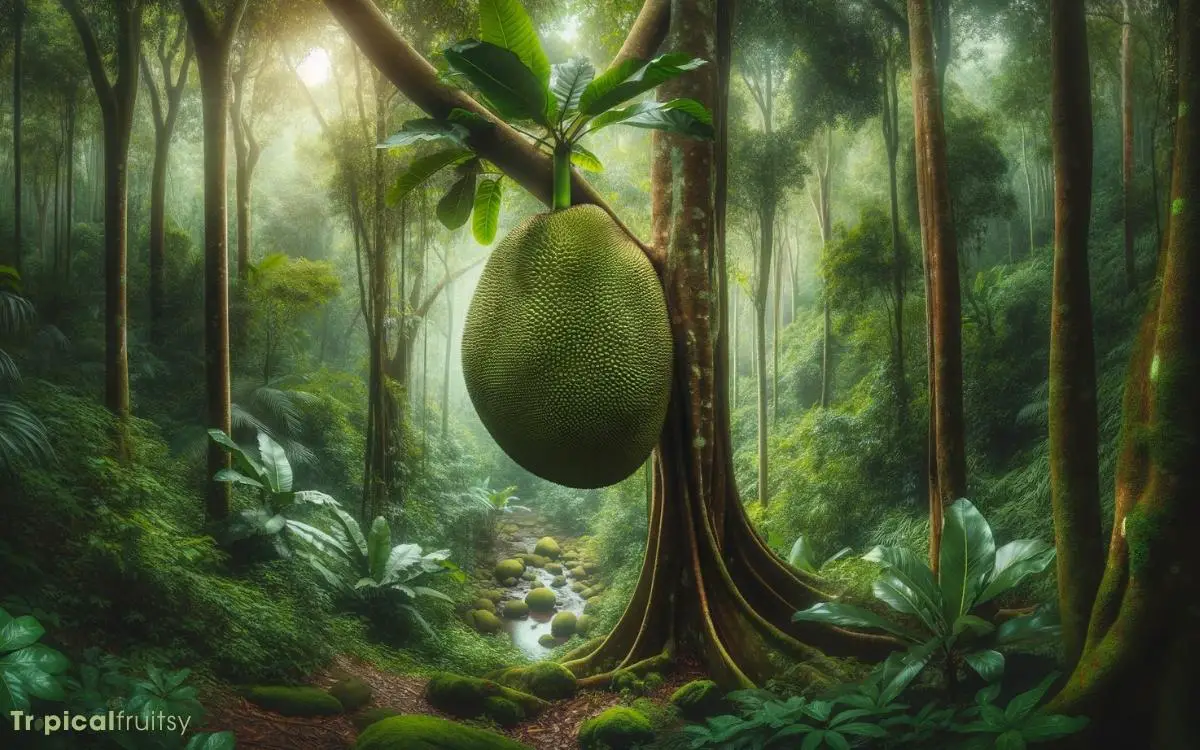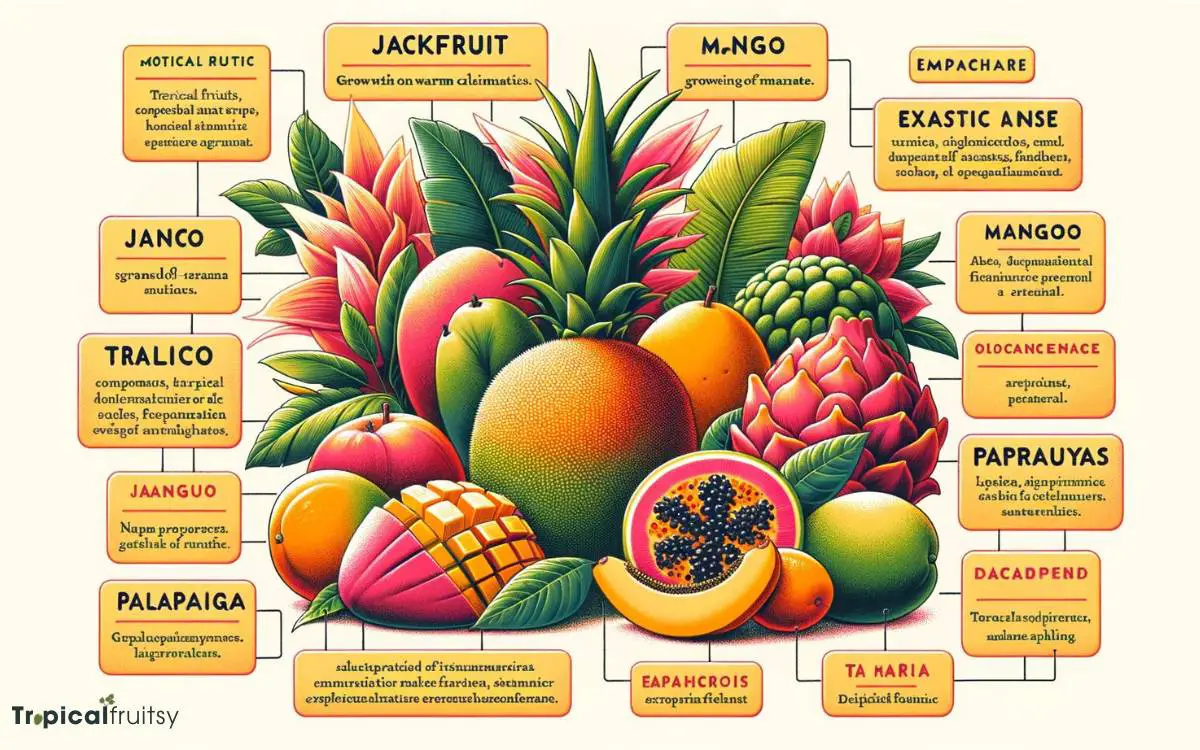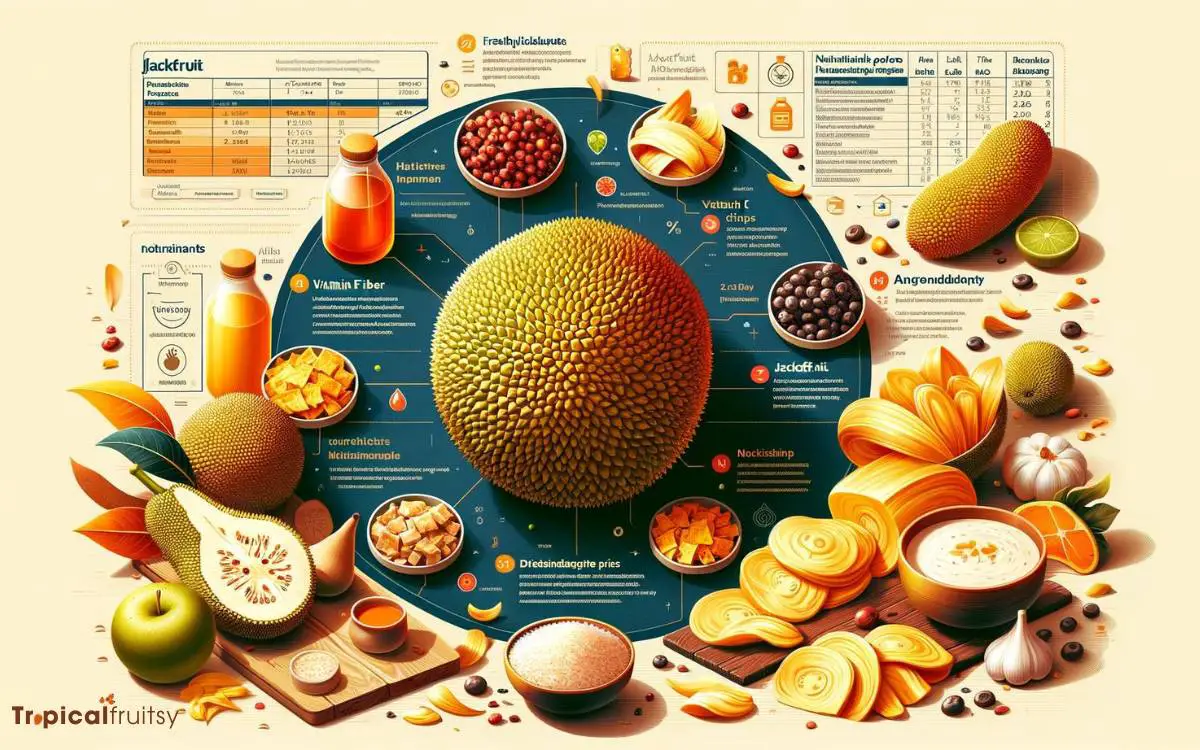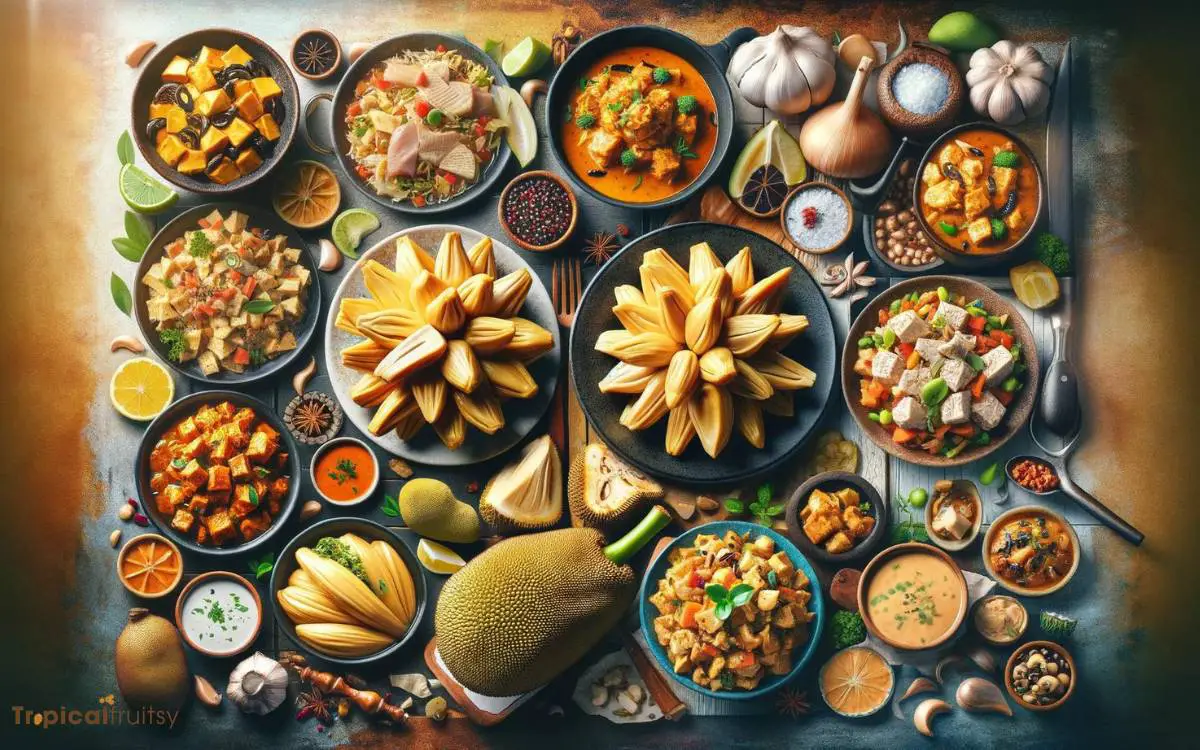Is Jackfruit a Tropical Fruit? Yes!
Yes, jackfruit is classified as a tropical fruit. Originating from the rainforests of India’s Western Ghats, it is extensively grown in various regions of Southeast Asia.
The jackfruit thrives in the warm and humid climate typical of tropical areas and is known for its large size, distinctive sweet flavor, and versatile culinary uses. Jackfruit, or Artocarpus heterophyllus, is inherently a tropical species.
The conditions that define its natural habitat include:
Jackfruit’s unique properties affirm its status as a tropical fruit, integral to both cuisine and nutrition in equatorial regions.

Key Takeaway
8 Characteristic: Is Jackfruit a Tropical Fruit
| Characteristic | Description |
|---|---|
| Origin | Western Ghats of India |
| Scientific Name | Artocarpus heterophyllus |
| Climate Preference | Tropical, warm, and humid |
| Edible Parts | Fruit flesh (bulbs), seeds |
| Flavor | Sweet, distinctive |
| Culinary Uses | Eaten raw, cooked in curries, or made into jams |
| Nutritional Value | High in Vitamin C, potassium, dietary fiber |
| Global Popularity | Increasingly cultivated in tropical regions |
Exploring Jackfruit Origins

Tracing the origins of jackfruit leads us back to the rainforests of southwestern India, where it has been cultivated for thousands of years.
Botanically known as Artocarpus heterophyllus, the jackfruit is a member of the Moraceae family, which also includes figs, mulberries, and breadfruit.
This species thrives in tropical conditions characterized by humid climates and rich, deep soils, which are conducive to its growth and fruit development.
Genetic analyses suggest that domestication of the jackfruit tree has led to distinct cultivars, each adapted to specific regional conditions and cultural preferences.
The fruit’s historical significance is underlined by extensive references in ancient Indian literature, indicating its long-standing role in local diets and agronomy.
Defining Tropical Fruit

In the context of botany, a tropical fruit is one that originates and flourishes within the equatorial region, where the climate is warm and frost-free year-round.
These fruits are typically produced by plants that thrive in the heat and high humidity characteristic of tropical zones, situated between the Tropic of Cancer and the Tropic of Capricorn.
Tropical fruits have evolved to adapt to these environments, often exhibiting features such as thick skins to prevent moisture loss, or vibrant colors to attract specific pollinators.
The classification of tropical fruits extends beyond mere geography; it encompasses their ecological interactions, physiological adaptations to the tropical climate, and their agricultural requirements, which are distinct from those of temperate fruit species.
Jackfruit’s Growth Environment

Jackfruit thrives as a tropical delicacy, originating in the rainforests of India and now cultivated in various warm, humid regions around the globe.
This fruit necessitates a specific set of environmental conditions to flourish. It demands high humidity and a consistent warm climate, free from frost, which would be detrimental to its growth.
The ideal temperature range for jackfruit cultivation lies between 25 to 35 degrees Celsius (77 to 95 degrees Fahrenheit).
| Factor | Requirement for Jackfruit Growth |
|---|---|
| Climate | Tropical, consistently warm |
| Temperature | 25 – 35°C (77 – 95°F) |
| Humidity | High |
| Frost Tolerance | None (frost-sensitive) |
The species thrives in well-drained, alluvial soils but has shown an ability to adapt to a wide range of soil conditions, provided that waterlogging does not occur.
Nutritional Profile of Jackfruit

The nutritional profile of jackfruit is notably diverse, offering a rich source of vitamins, minerals, fiber, and protein, which contribute to its status as a healthful addition to any diet.
This multifaceted fruit contains significant amounts of vitamin C, known for its antioxidant properties and its role in immune function.
Additionally, it is replete with B vitamins, particularly vitamin B6, essential for metabolism and brain health.
Jackfruit is also a noteworthy source of potassium, which is vital for maintaining electrolyte balance and cardiovascular health.
Its fiber content promotes digestive health, while the presence of protein makes it an uncommonly nutritious fruit for vegetarians and vegans.
Moreover, it contains phytonutrients, such as flavonoids, saponins, and tannins, which have been associated with anti-inflammatory and antifungal benefits.
Are Both Jackfruit and Grapefruit Considered Tropical Fruits?
Yes, both jackfruit and grapefruit are considered tropical fruits. Jackfruit is a species of tree in the fig, mulberry, and breadfruit family native to southwest India, while grapefruit is a subtropical citrus fruit. However, grapefruit as a tropical fruit is widely accepted due to its cultivation in tropical regions.
Culinary Uses Worldwide

Embracing a diverse range of culinary traditions, jackfruit is utilized globally in both sweet and savory dishes, from Southeast Asian curries to Latin American desserts.
In its unripe form, jackfruit’s fibrous texture is a popular meat substitute, providing a substantial base for vegan and vegetarian recipes. It absorbs flavors proficiently, making it a versatile ingredient in stews and stir-fries.
When ripe, its intense sweetness and distinctive aroma lend themselves to confectioneries and fruit salads.
Nutritionally, jackfruit contributes significantly to dietary fiber and vitamin C intake, while its seeds, rich in protein, are often boiled, roasted, or ground into flour.
This multifaceted fruit thus not only traverses various culinary landscapes but also offers substantial health benefits, reinforcing its global culinary significance.
Conclusion
In the grand tapestry of the world’s flora, jackfruit can be likened to an opulent, emerald jewel nestled within the verdant treasure chest of the tropics.
Each fruit, a symphony of complex nutrients, stands as a testament to nature’s ingenuity in nourishing humanity.
As it dangles from the sturdy branches, it not only reflects the fecundity of its native ecosystem but also symbolizes the rich cultural mosaic of the regions that have woven it into their culinary heritage.






